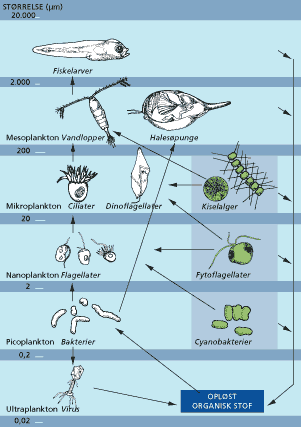Plankton in tropical seas – important routes in the food networkPlankton in tropical seas – important routes in the food network
Head of Project: Professor Torkel Gissel Nielsen, Ph.D., Dr. Scient., The Department for Marine Ecology, National Environmental Research Institute.
The smallest organisms in the sea, the plankton, are a determining factor in the marine ecosystem and make up the foundation for life at higher levels, such as fish and cetaceans. In the course of this project, we shall examine the turnover of plankton in the tropics and describe the ways in which the physical conditions and the animals’ food network are distinguished from those we know from the temperate (northern) seas. We shall go into depth with the special adaptations and species structure of plankton
The tropical seas comprise 42 per cent of the total surface of the seas, but despite the magnitude, our knowledge of the diversity, production and turnover of marine species very limited. In the course of this project, which will be conducted in a marine area north of Australia, we shall research a number of the important physical and biological parameters in order to gain greater insight into the turnover within the tropical ecosystem. We expect the tropical ecosystem to have certain similarities with the ecosystem we know from our own marine areas, but we also expect them to differ in a number of crucial areas. For instance, our previous explorations in the Andaman Sea at Thailand have shown that these ecosystems can be very stable, in spite of the dynamic oceanography with, for instance, forceful internal waves and large seasonal variations in, for instance, the frequency of storms. The food network thus retains nutritive salt effectively, and the addition of small contributions of nutritive salt is rapidly absorbed by the nutritionally limited phytoplankton and is passed further up through the food chain. In addition, the surface layer is strongly influenced by ultra-violet radiation. UV and nutritive salt limitation are presumably the decisive factors which determine the depth distribution of the organisms. For this reason, the depth distribution of organisms and the precipitation of organic material form an important subject in the project.
Projektet er sponsoreret af The project is sponsored by
 www.flysaa.com www.flysaa.com
|
|

Food network
|